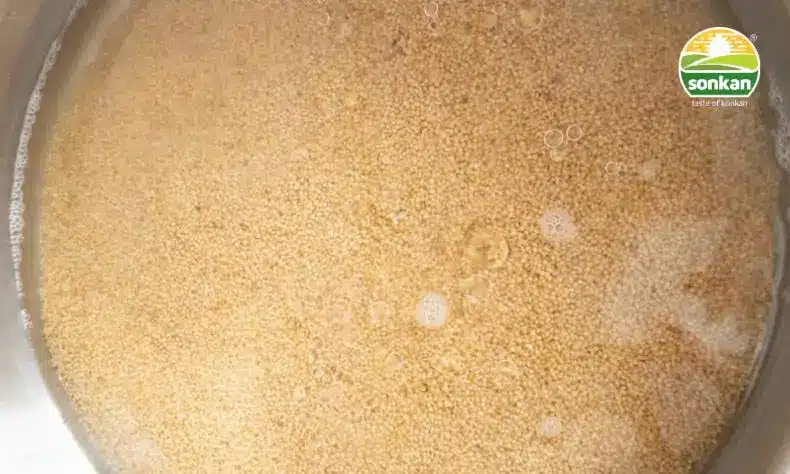Introduction
Millet, a group of small-seeded grasses, has been a staple in various cultures for thousands of years. Packed with essential nutrients, millets are gaining popularity as a nutritious alternative to traditional grains. As the world turns its attention to healthier eating habits, the question of whether millet needs to be soaked has become a topic of discussion. In this blog, we will explore the reasons behind soaking millet, the potential benefits, and whether it is necessary for all types of millets.
The Nutritional Composition of Millets
Millets are a group of small-seeded grasses that have been cultivated for human consumption for centuries. Millet’s nutritional profile is one of its primary attractions. These grains are gluten-free, making them suitable for individuals with gluten sensitivity or celiac disease. Additionally, millets are rich in dietary fiber, supporting digestive health and aiding in weight management. Common varieties include sorghum, foxtail millet, pearl millet, finger millet, and proso millet. These grains are renowned for their nutritional content, offering a rich source of fiber, protein, vitamins, and minerals.
Soaking Millets: The Pros and Cons
Soaking is a traditional practice in many cultures, especially with grains and legumes. The process involves immersing the grains in water for a specified period. Soaking millets serves several purposes, each with its set of advantages and potential drawbacks.
- Nutrient Enhancement: Soaking millets can enhance their nutritional value. The process activates enzymes that neutralize antinutrients like phytic acid and tannins. These antinutrients can inhibit the absorption of essential minerals, and soaking helps make these minerals more bioavailable.
- Improved Digestibility: Soaking millets can improve their digestibility. Enzymatic activity during soaking breaks down complex compounds, making the grains easier to digest. This can be particularly beneficial for individuals with sensitive digestive systems.
- Reduced Cooking Time: Soaked millets generally require less cooking time. This can be advantageous for those seeking quick and convenient meal preparation, promoting the inclusion of millets in everyday cooking.
- Texture and Taste: Soaked millets may have a softer texture and milder taste compared to their non-soaked counterparts. Some individuals prefer the altered texture, finding it more palatable.
- Time and Convenience: On the flip side, soaking millets requires time and planning. In our fast-paced lives, not everyone can spare the extra minutes for soaking. This may deter individuals from incorporating millets into their regular meals.
- Nutrient Loss: While soaking can enhance certain nutrients’ availability, it may result in the loss of water-soluble vitamins. If the soaking water is discarded, some vitamins may be drained away, affecting the overall nutritional content.
Does Every Millet Need Soaking?
The need for soaking millets varies depending on the type of millet and individual preferences. Let’s explore the soaking recommendations for some common millet varieties:
- Foxtail Millet (Kangni): Soaking foxtail millet is optional, but it can help improve digestibility. If you prefer a softer texture, soaking for 2-4 hours is recommended.
- Pearl Millet (Bajra): Pearl millet has a coarse texture, and soaking it for 6-8 hours or overnight is advisable. This softens the grains and reduces cooking time.
- Finger Millet (Ragi): Soaking finger millet for 6-8 hours or overnight is recommended to enhance nutrient absorption and reduce cooking time.
- Sorghum (Jowar): Soaking sorghum for 6-8 hours or overnight is common, particularly to reduce cooking time and enhance digestibility.
- Proso Millet (Varai): Soaking proso millet for 2-4 hours is recommended for improved digestibility. However, it is not mandatory.
Conclusion
In the millet soaking dilemma, there is no one-size-fits-all answer. The decision to soak millets depends on individual preferences, the specific type of millet, and the desired outcome. Soaking can enhance nutrient availability, improve digestibility, and reduce cooking time, but it may also lead to nutrient loss and require additional planning.
As millets continue to gain recognition as a nutritious and versatile grain, understanding the nuances of soaking becomes essential for those looking to incorporate them into their diets. Whether you choose to soak your millets or not, what matters most is enjoying these ancient grains and reaping the health benefits they offer.

